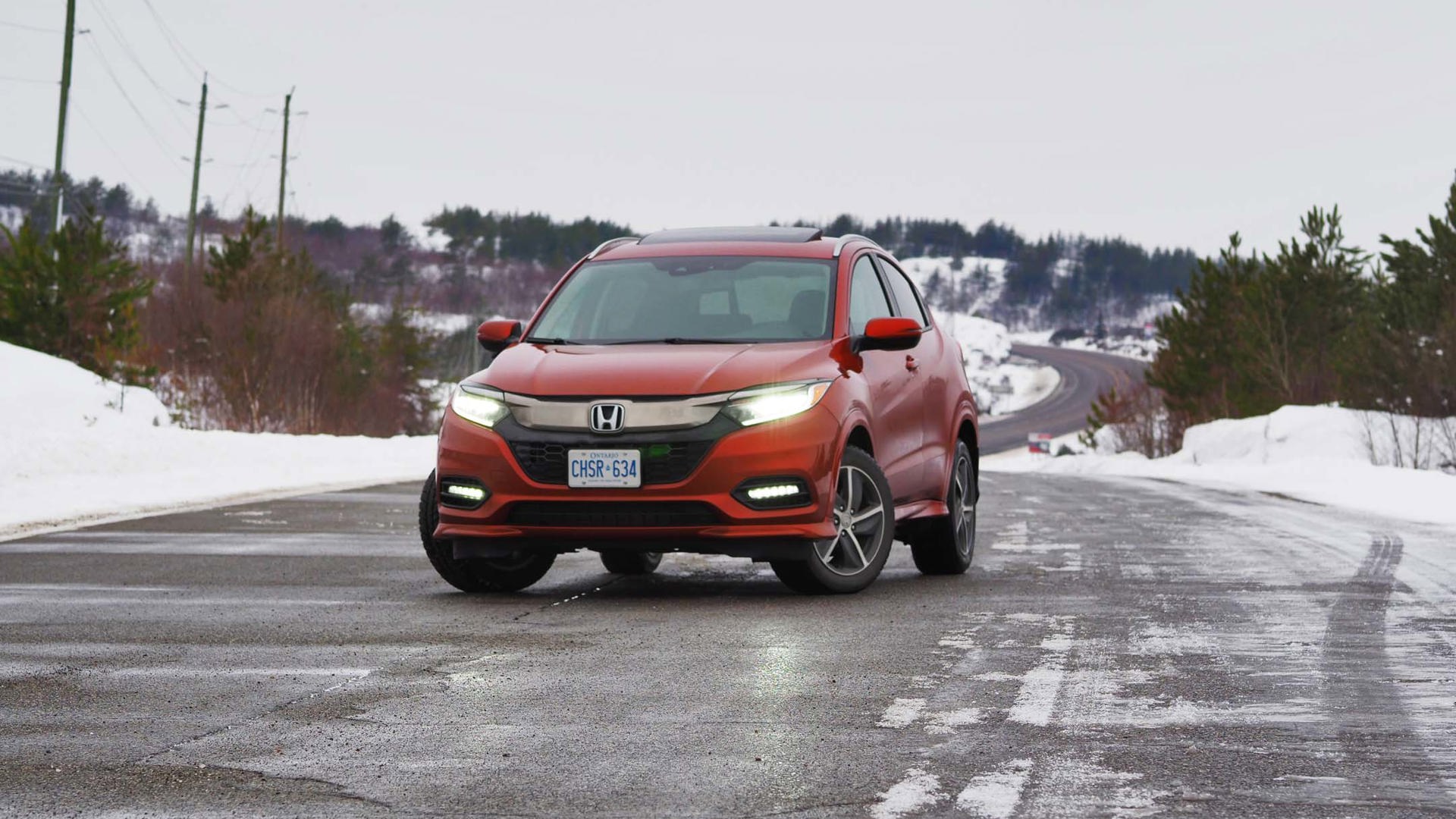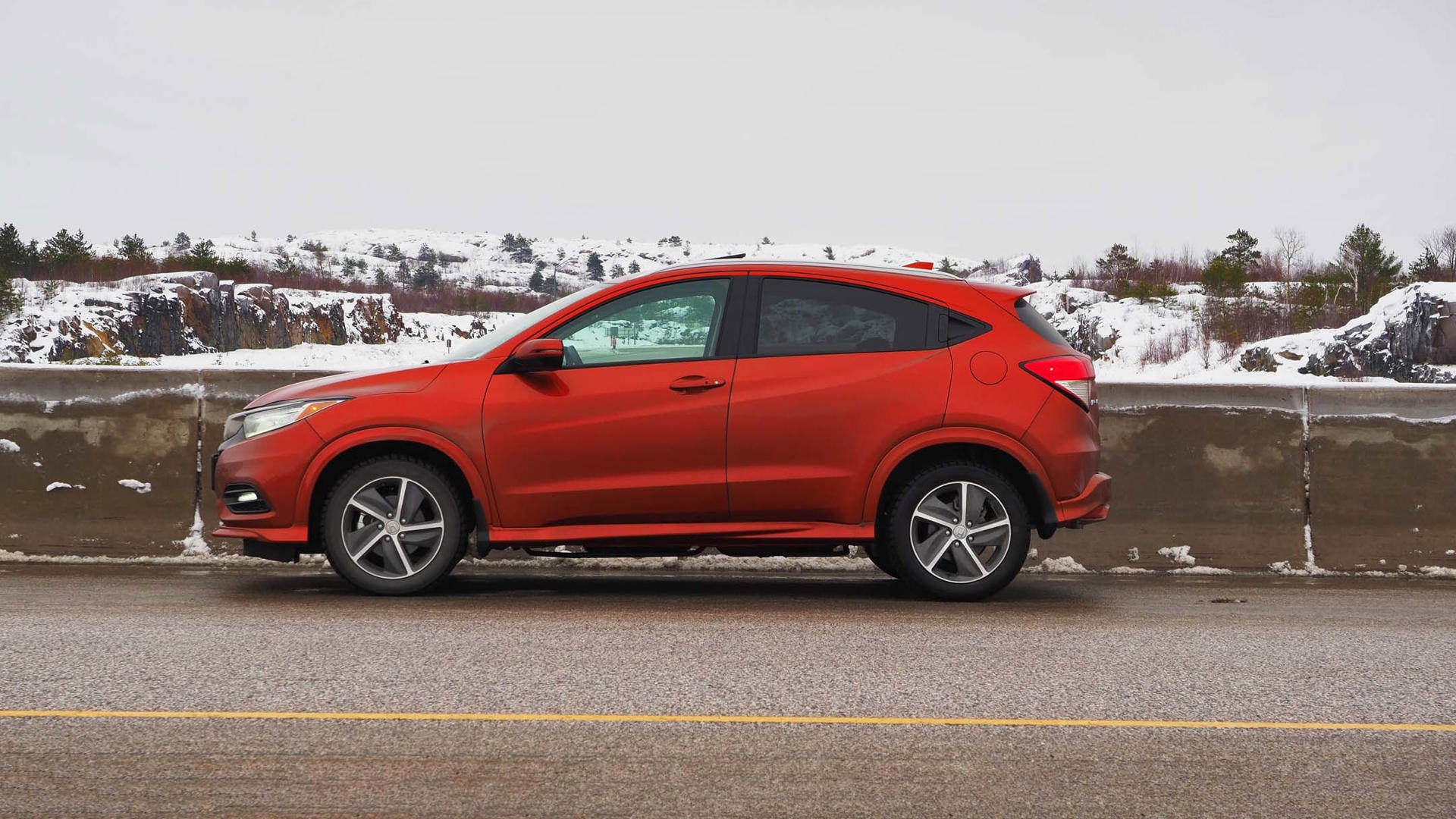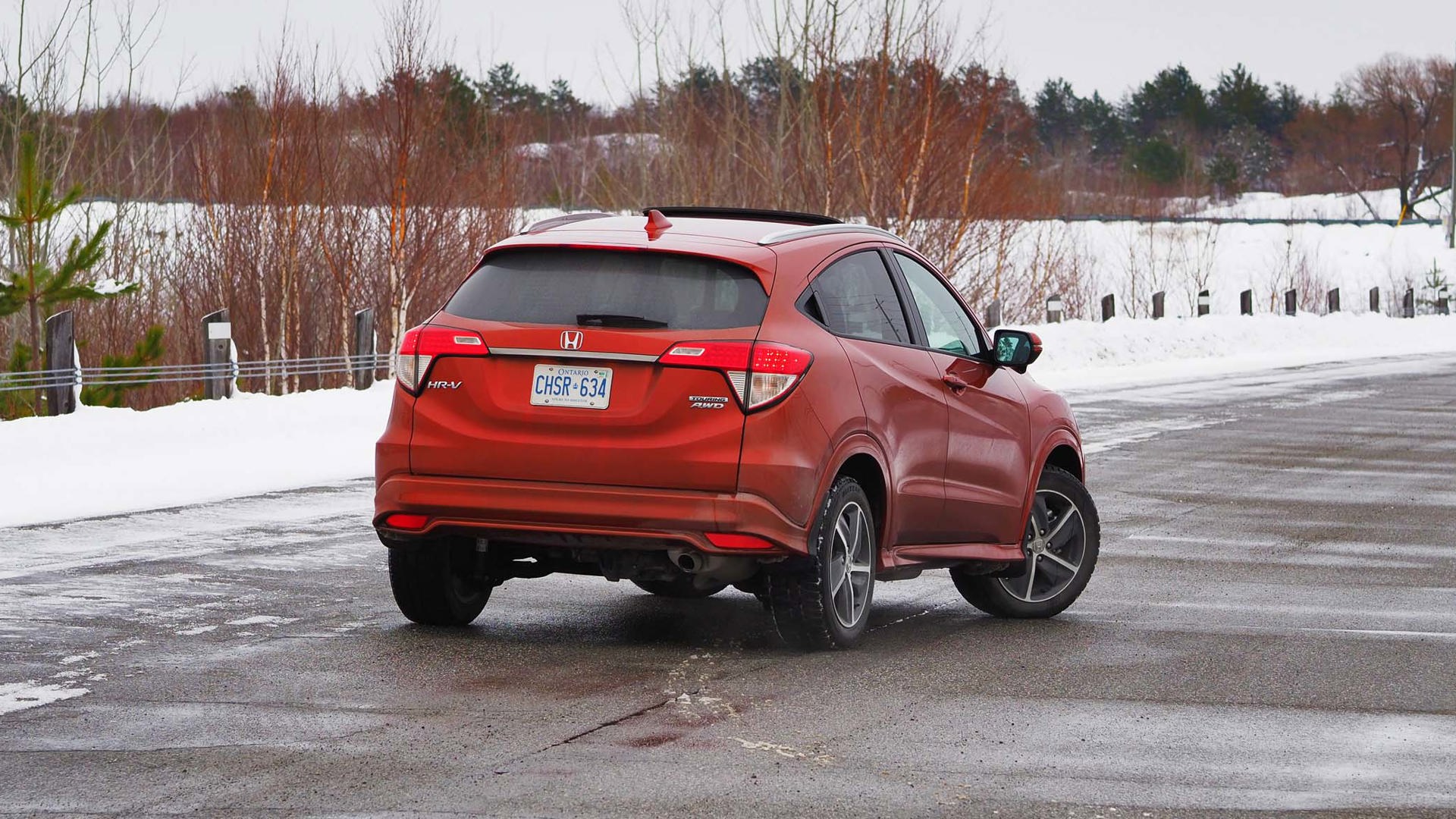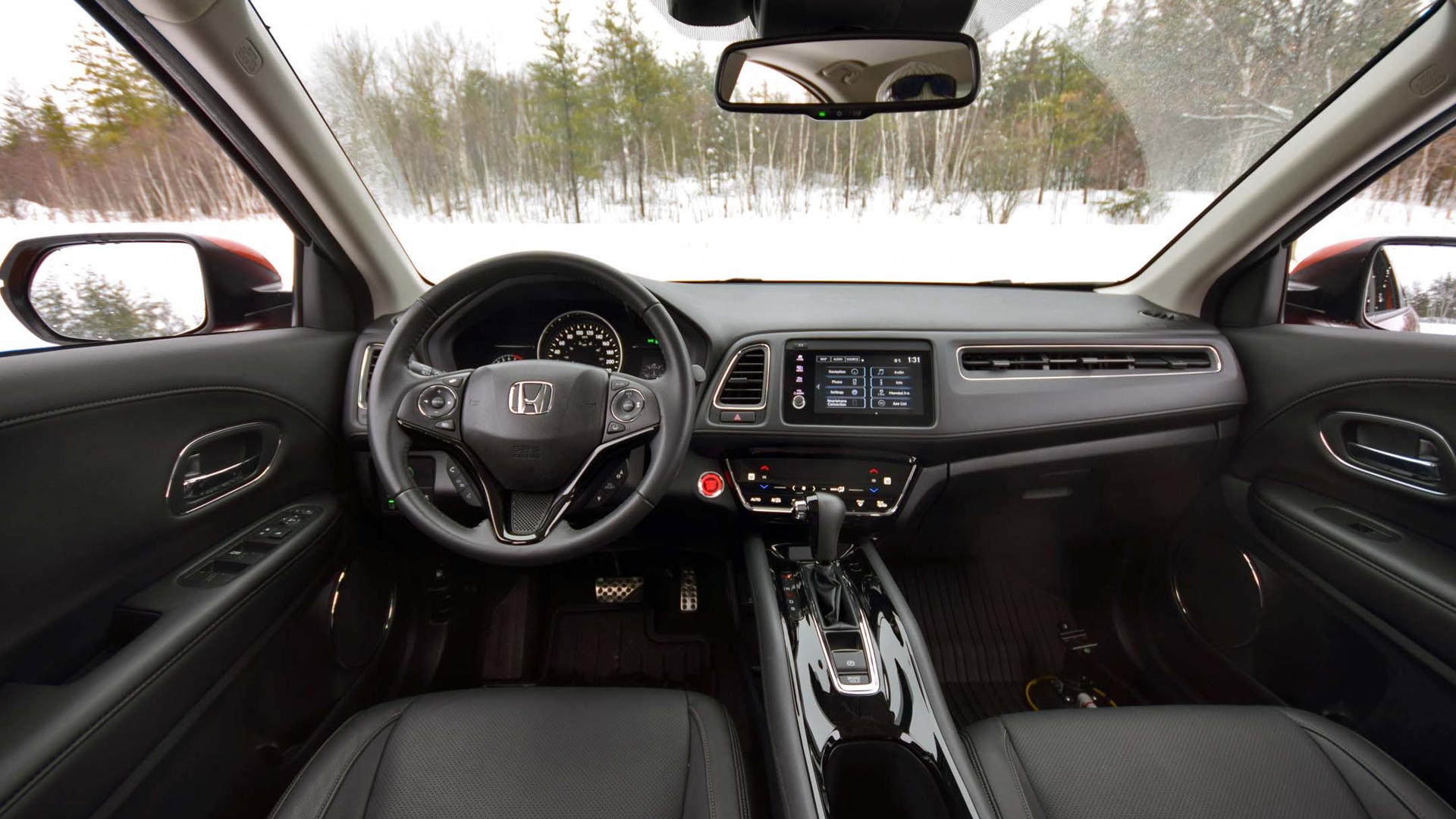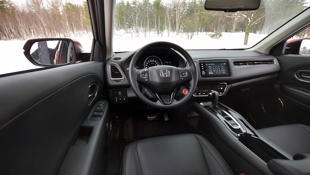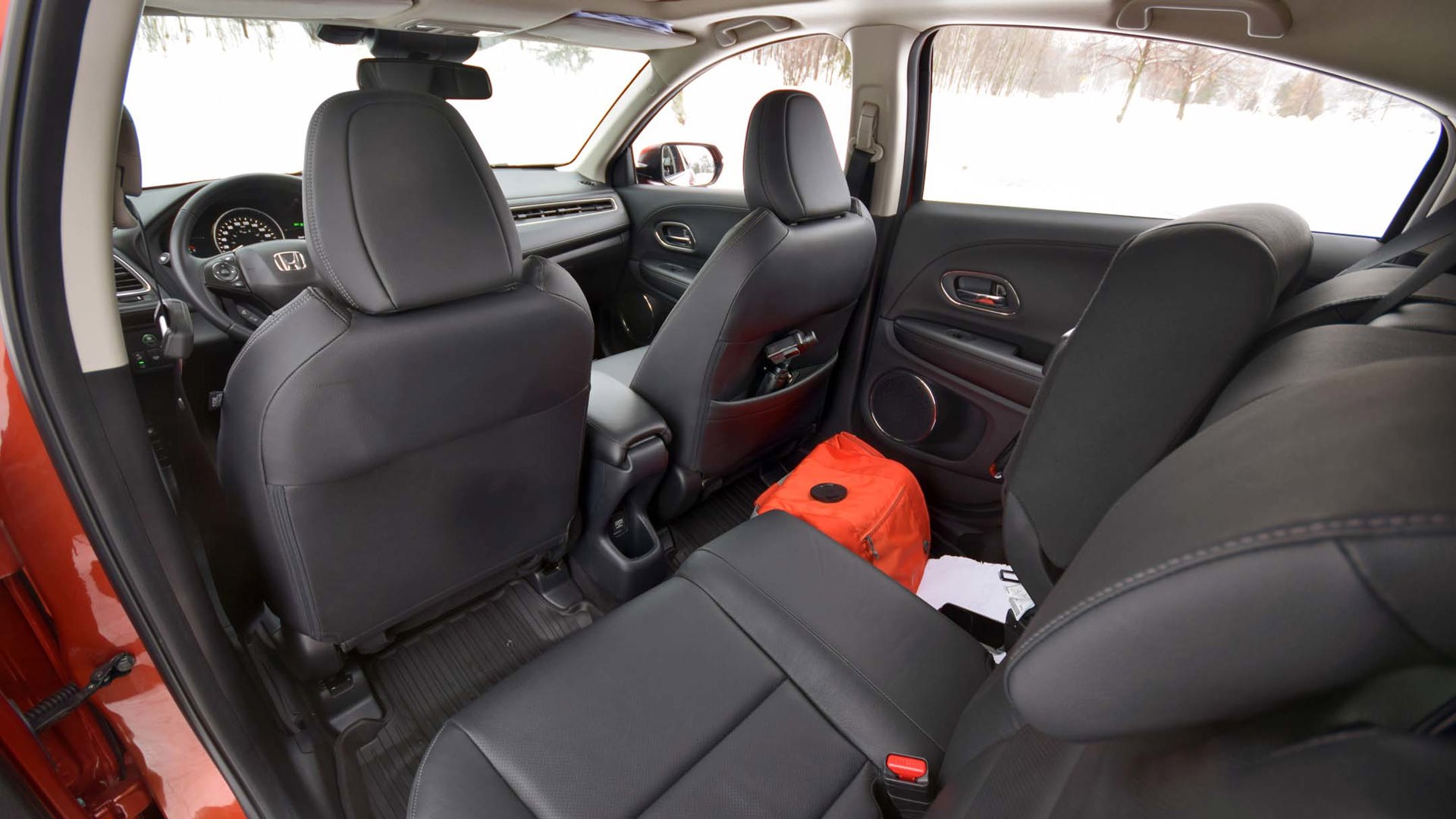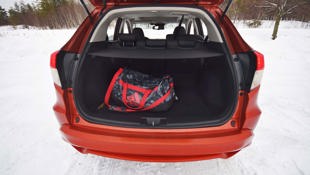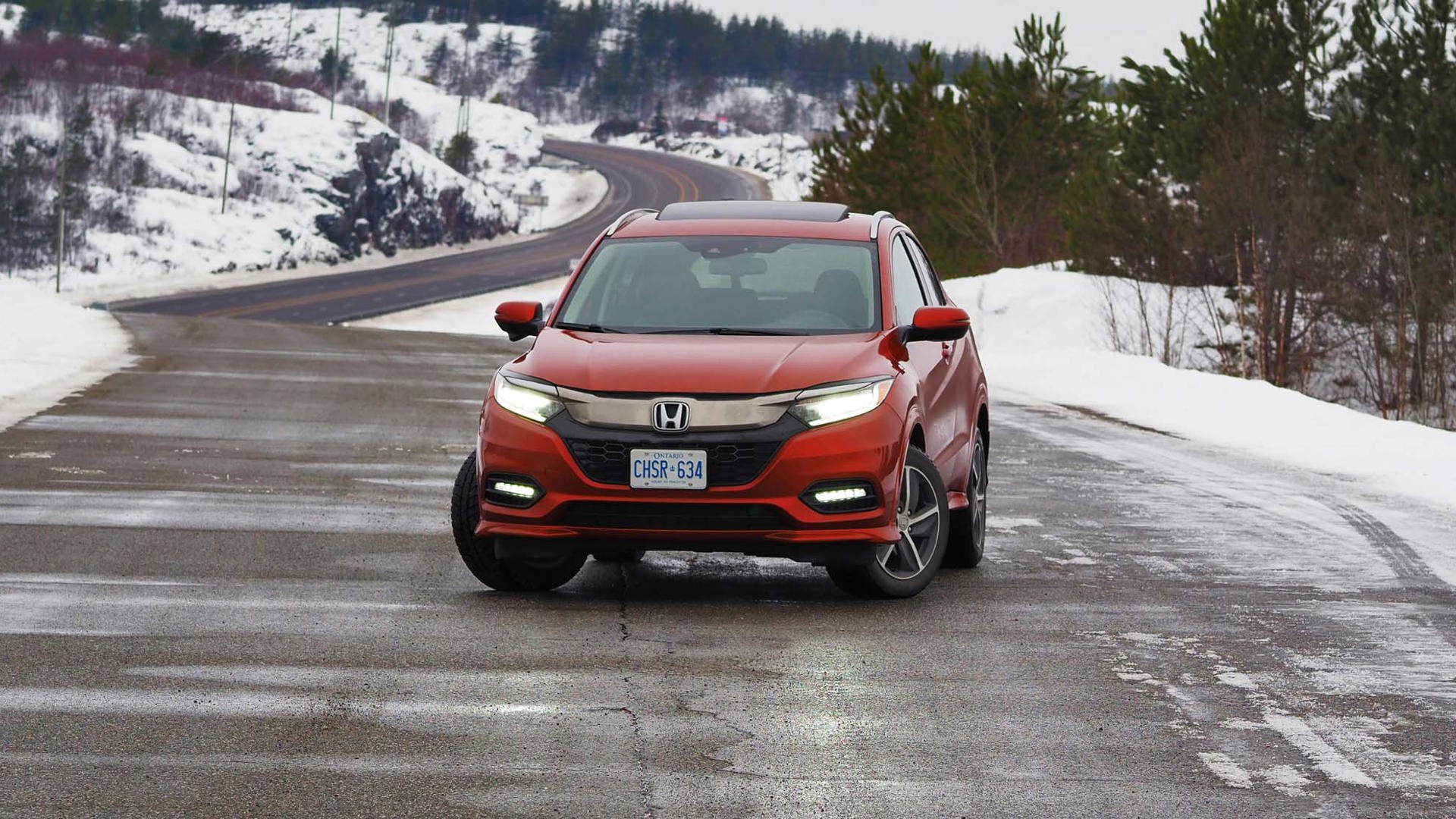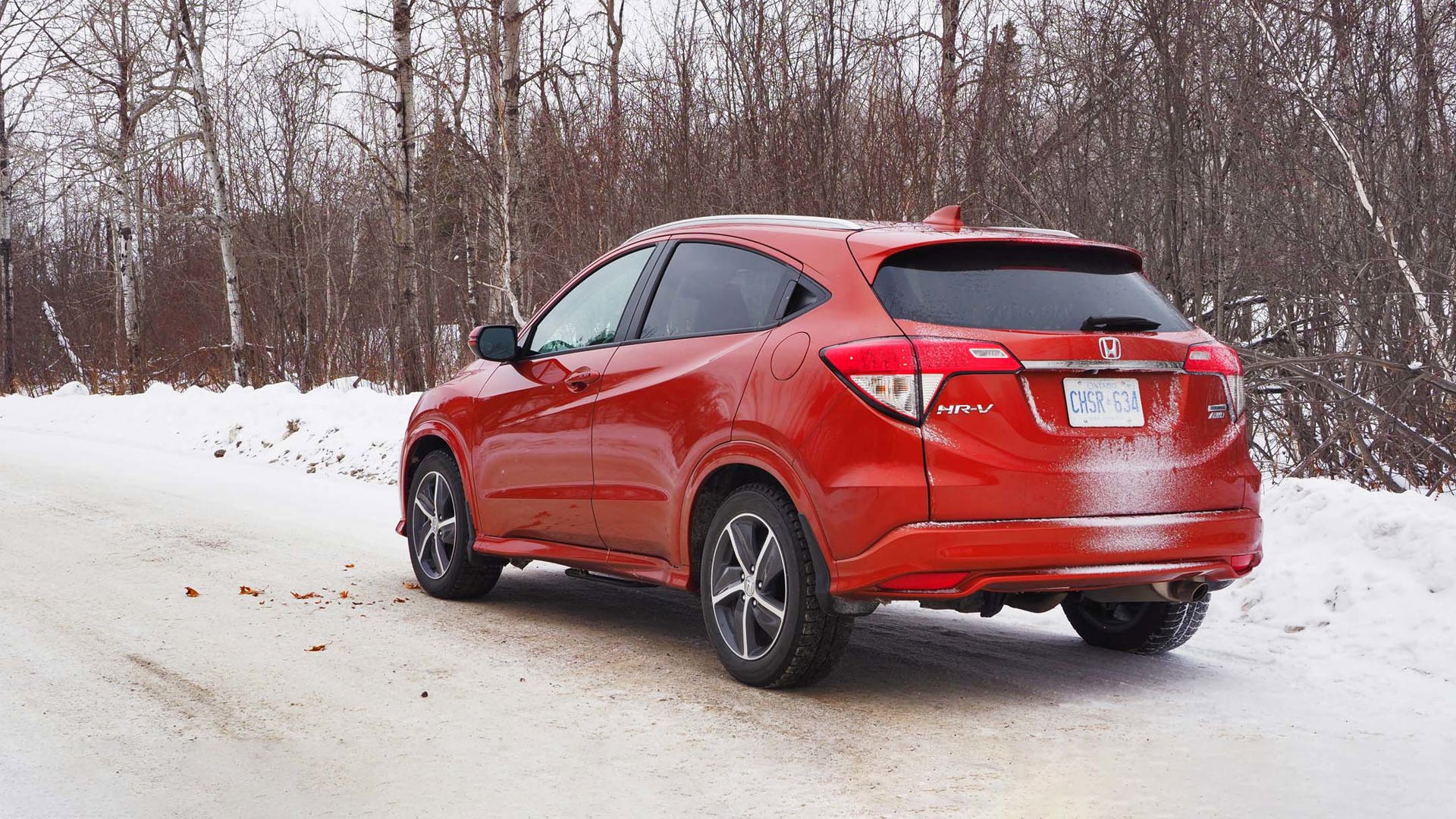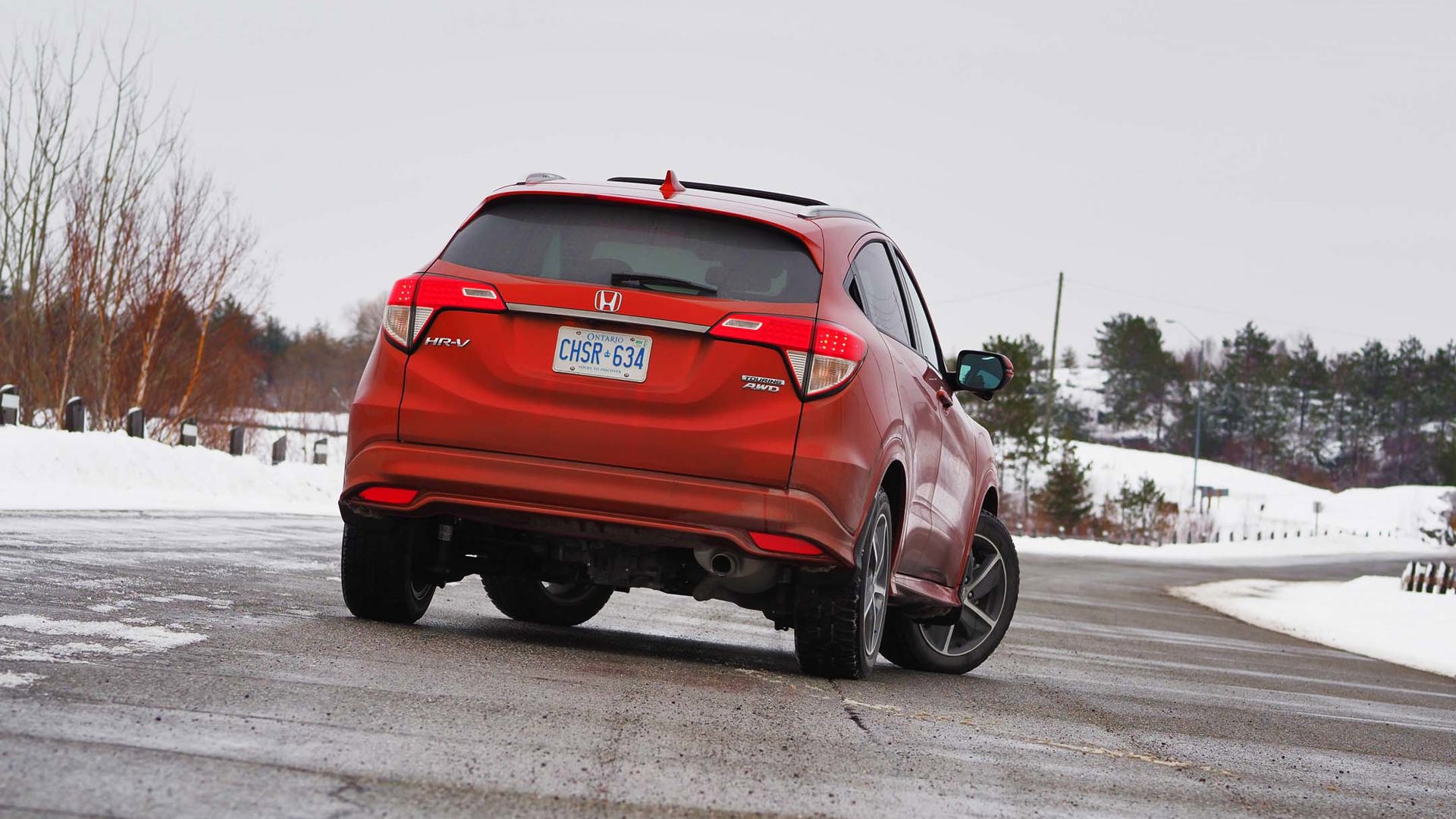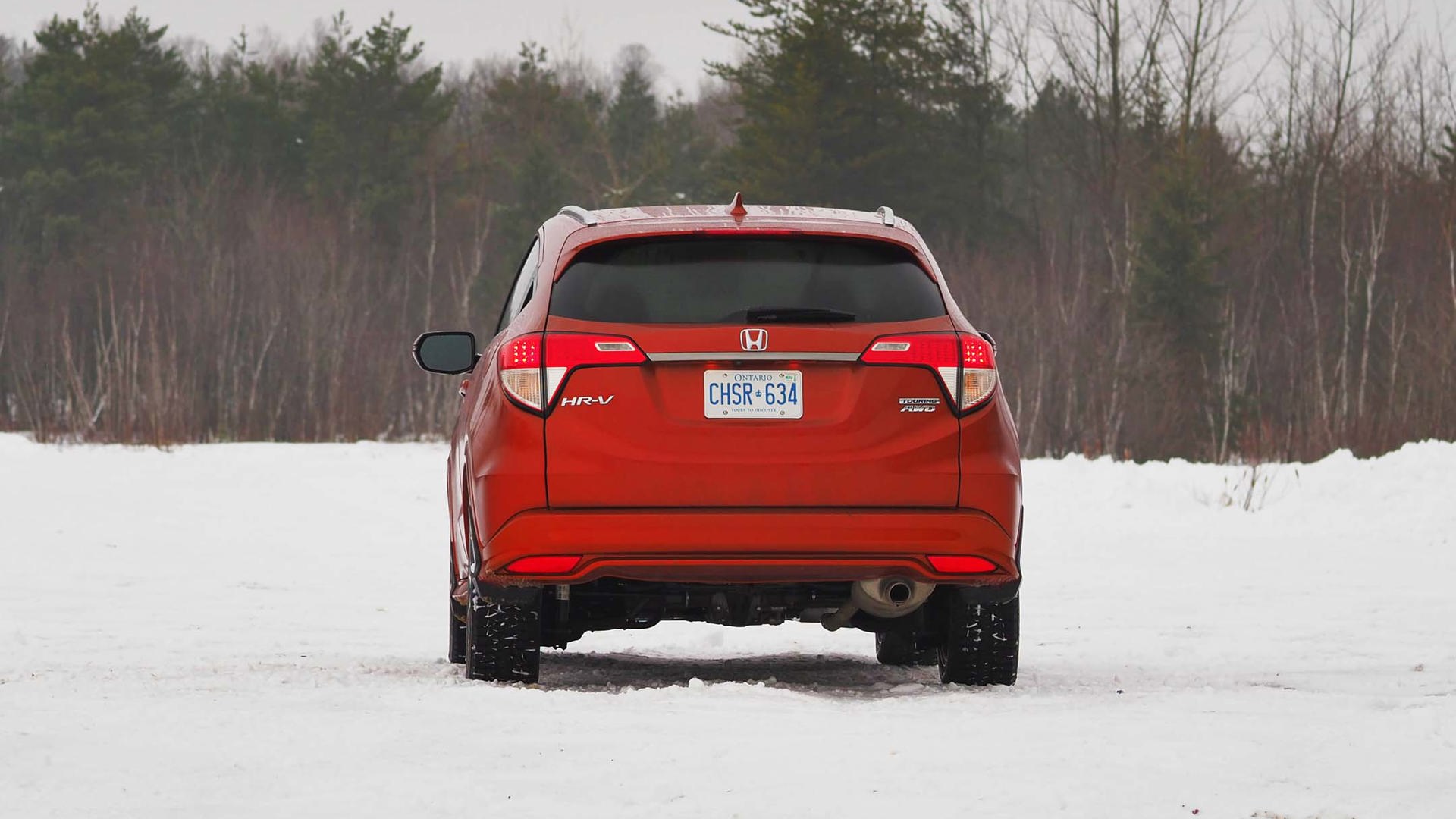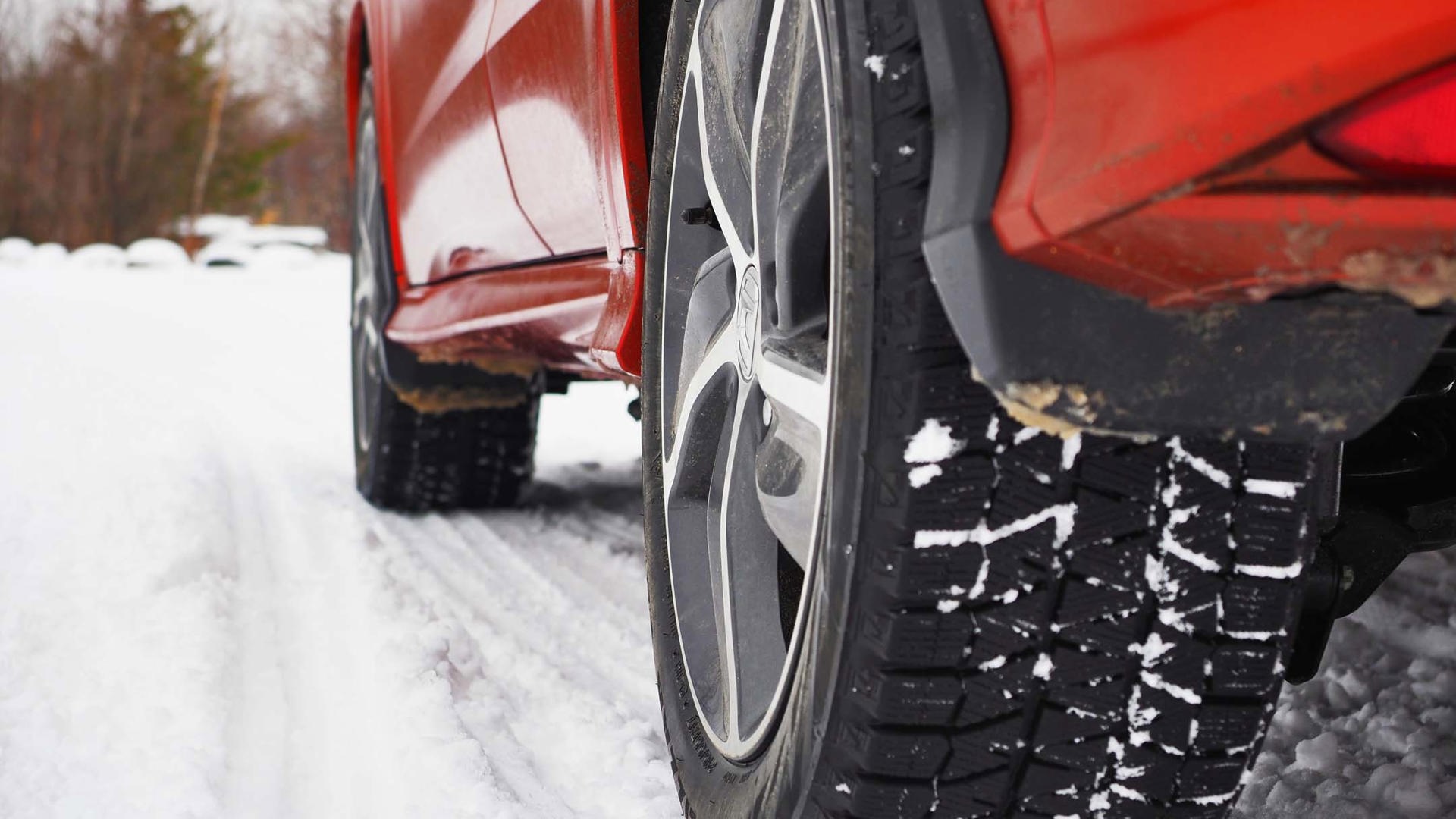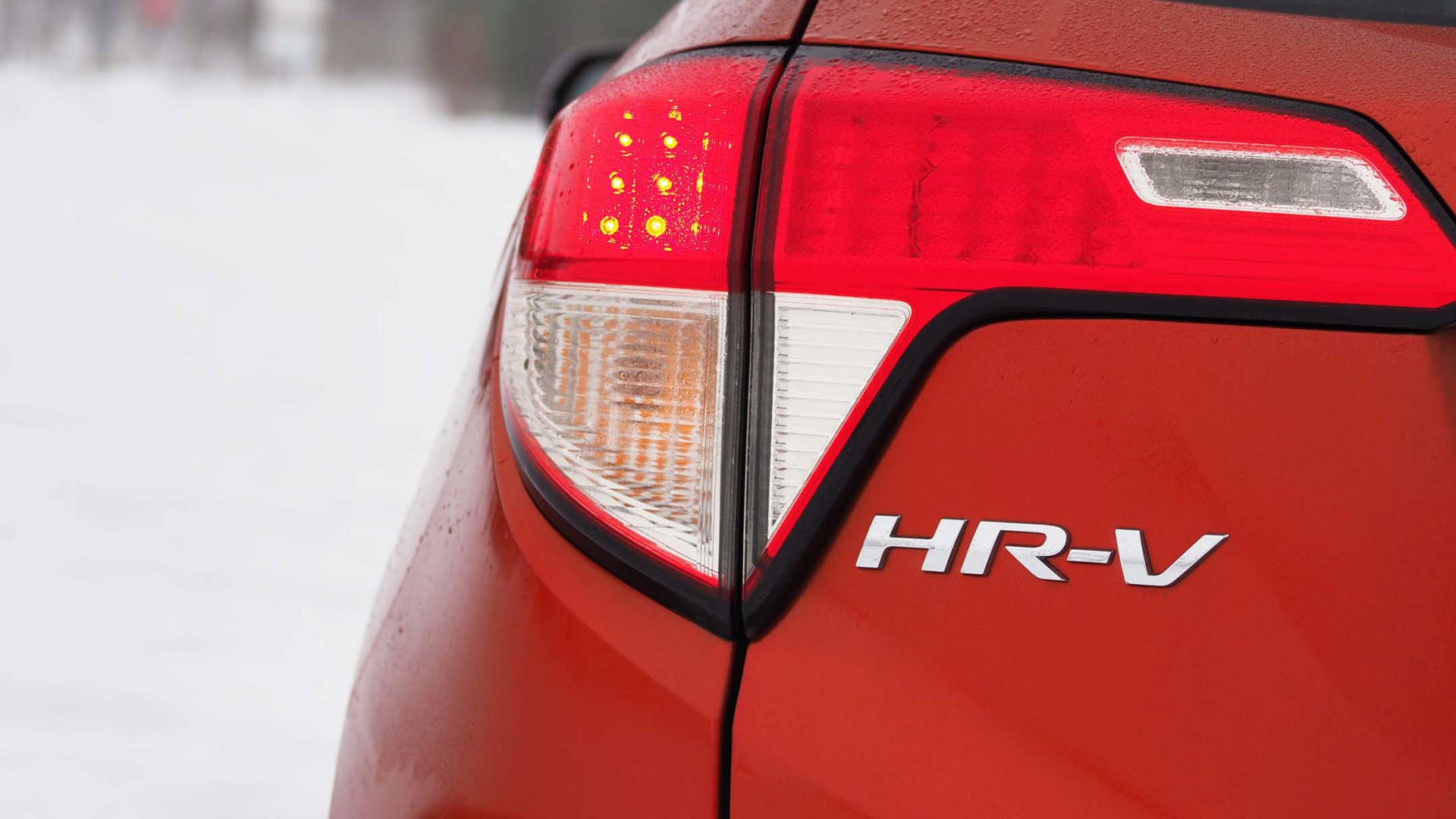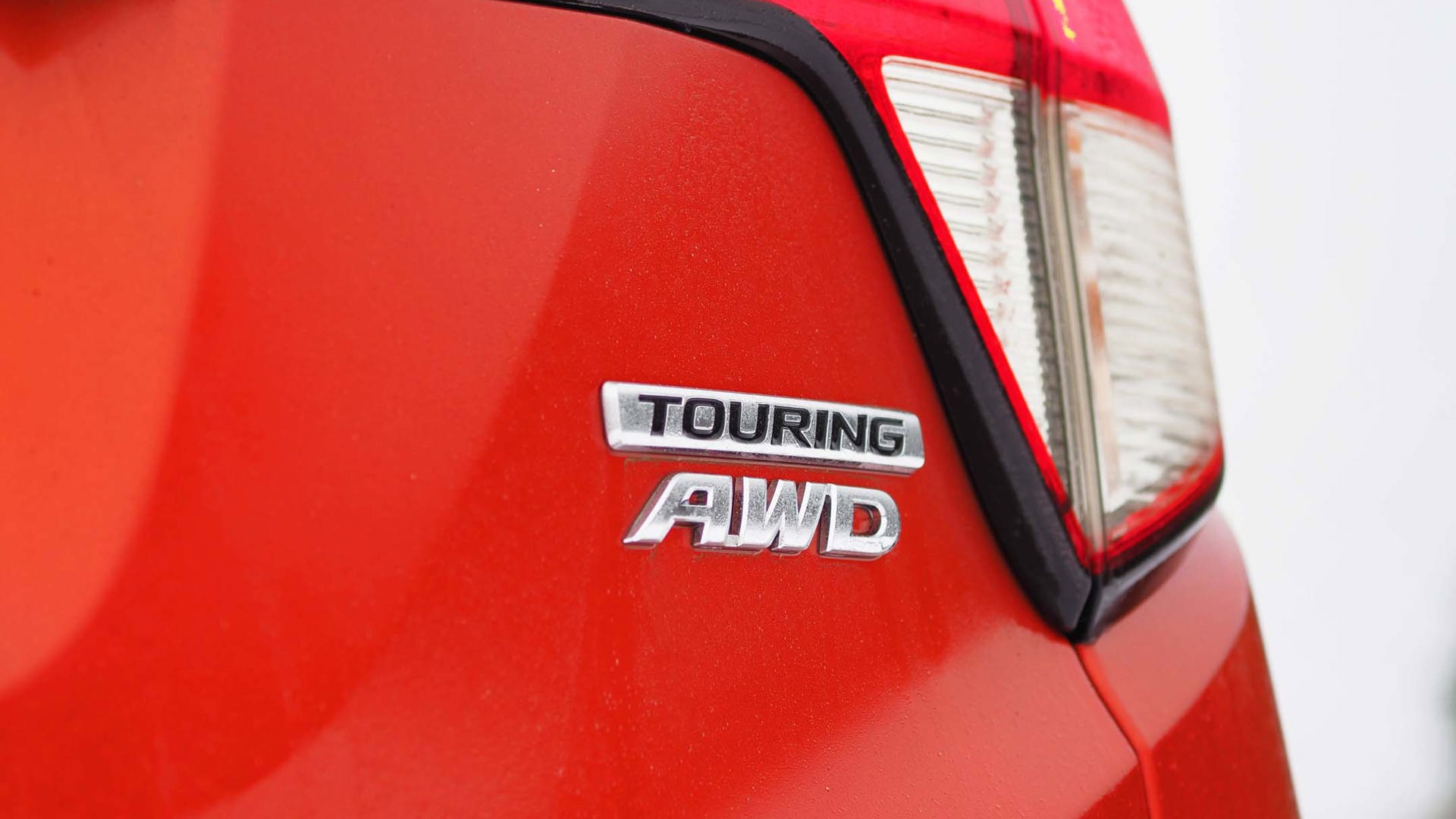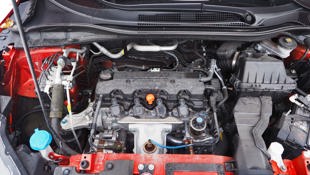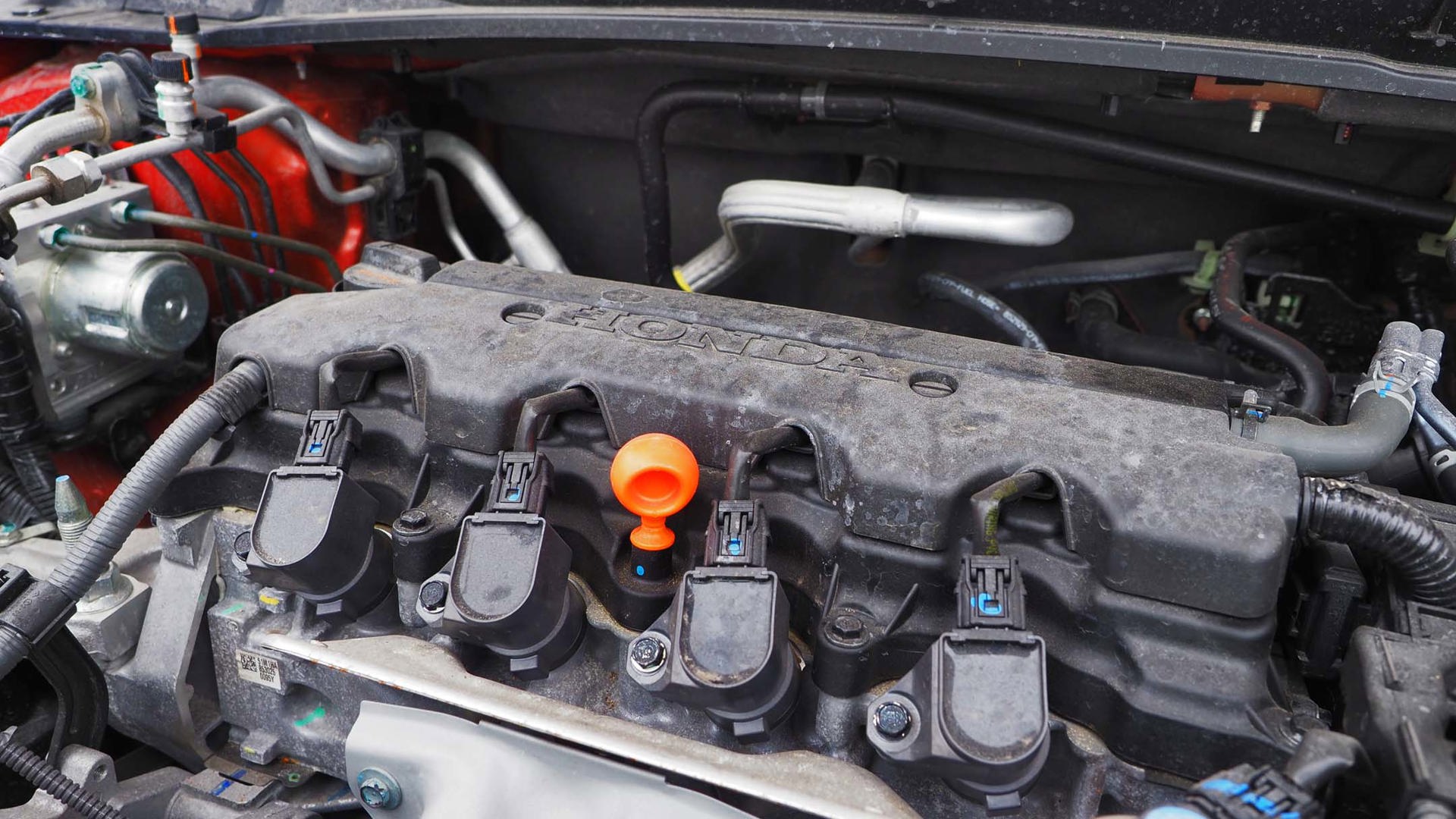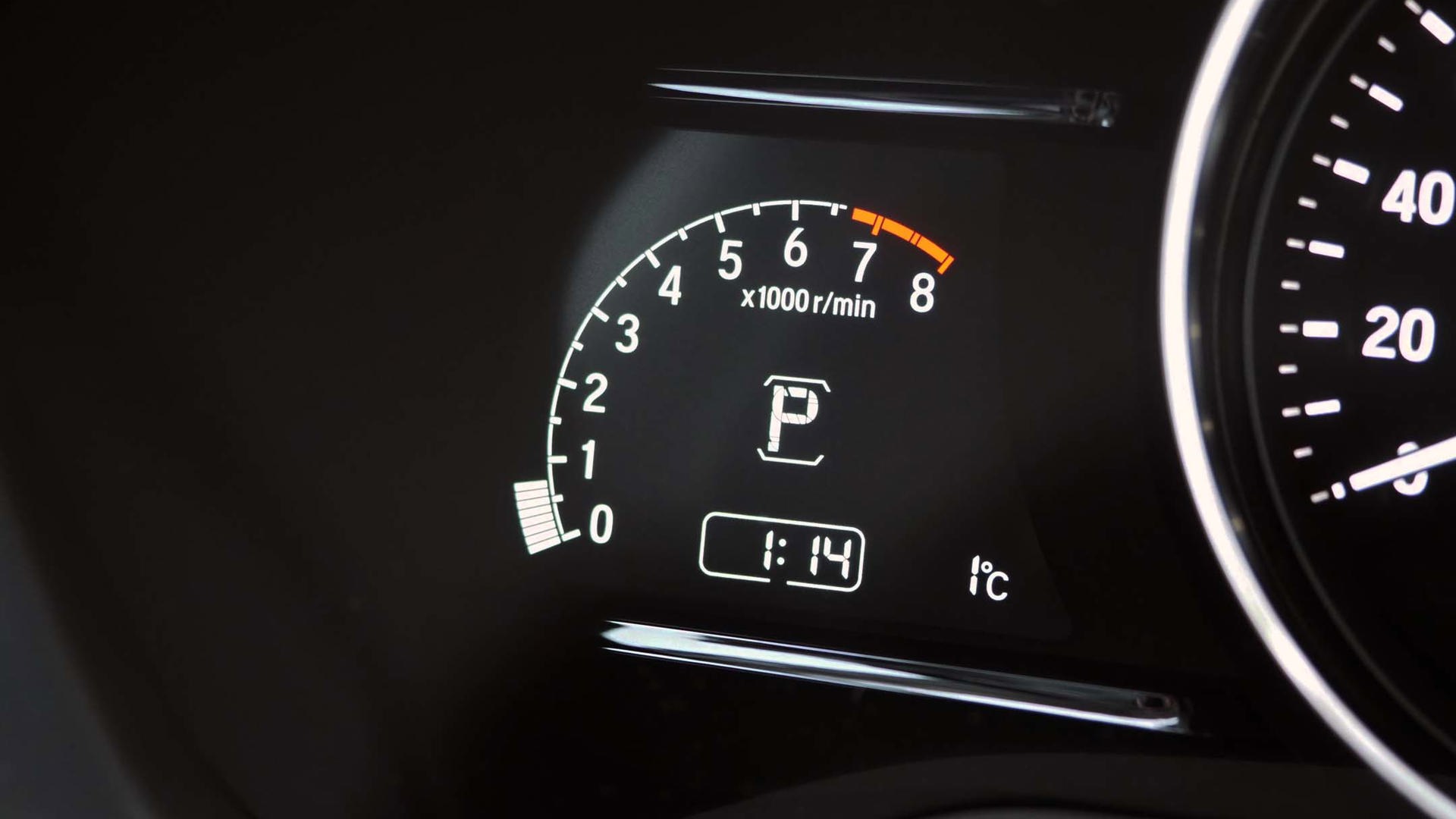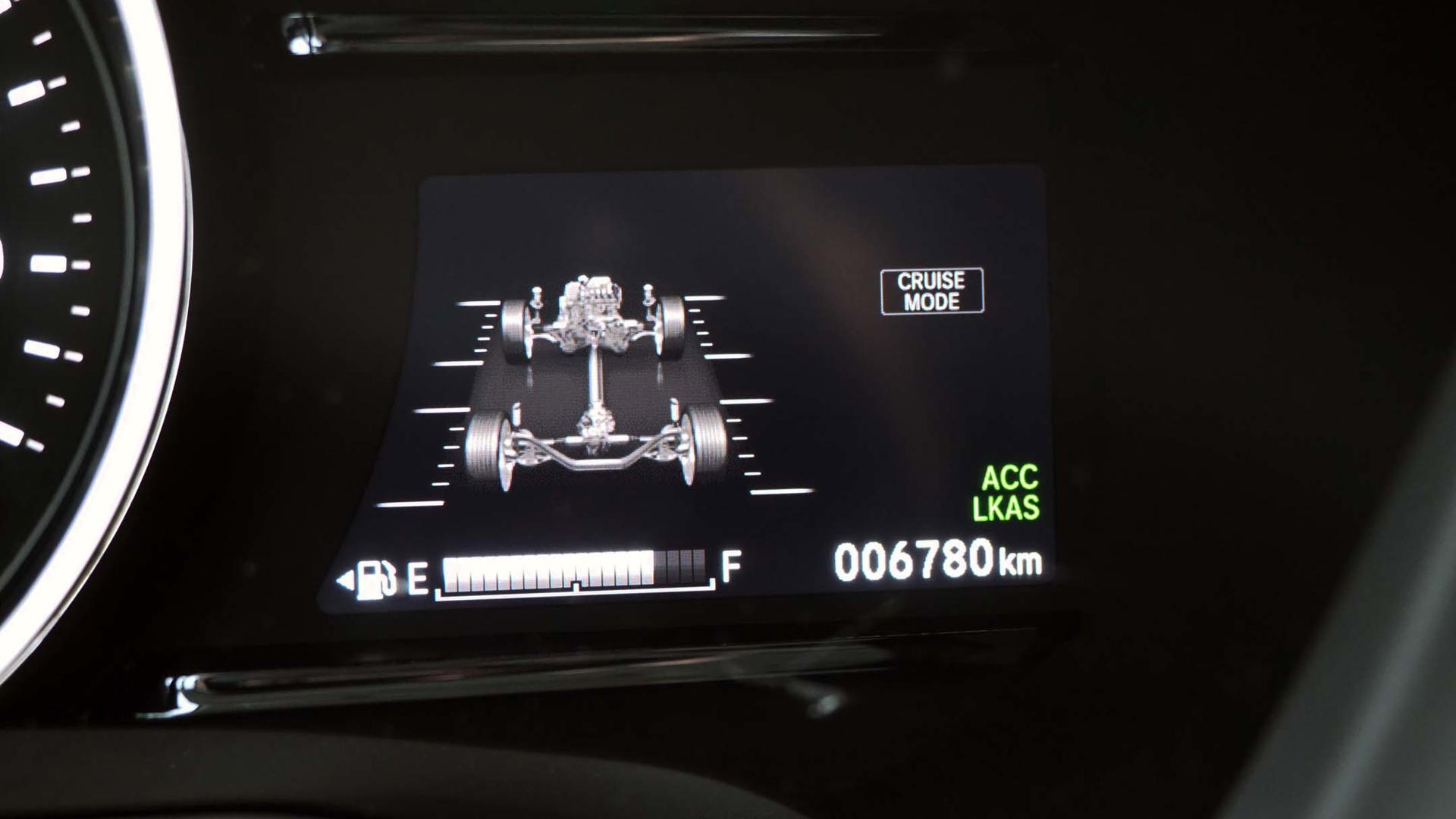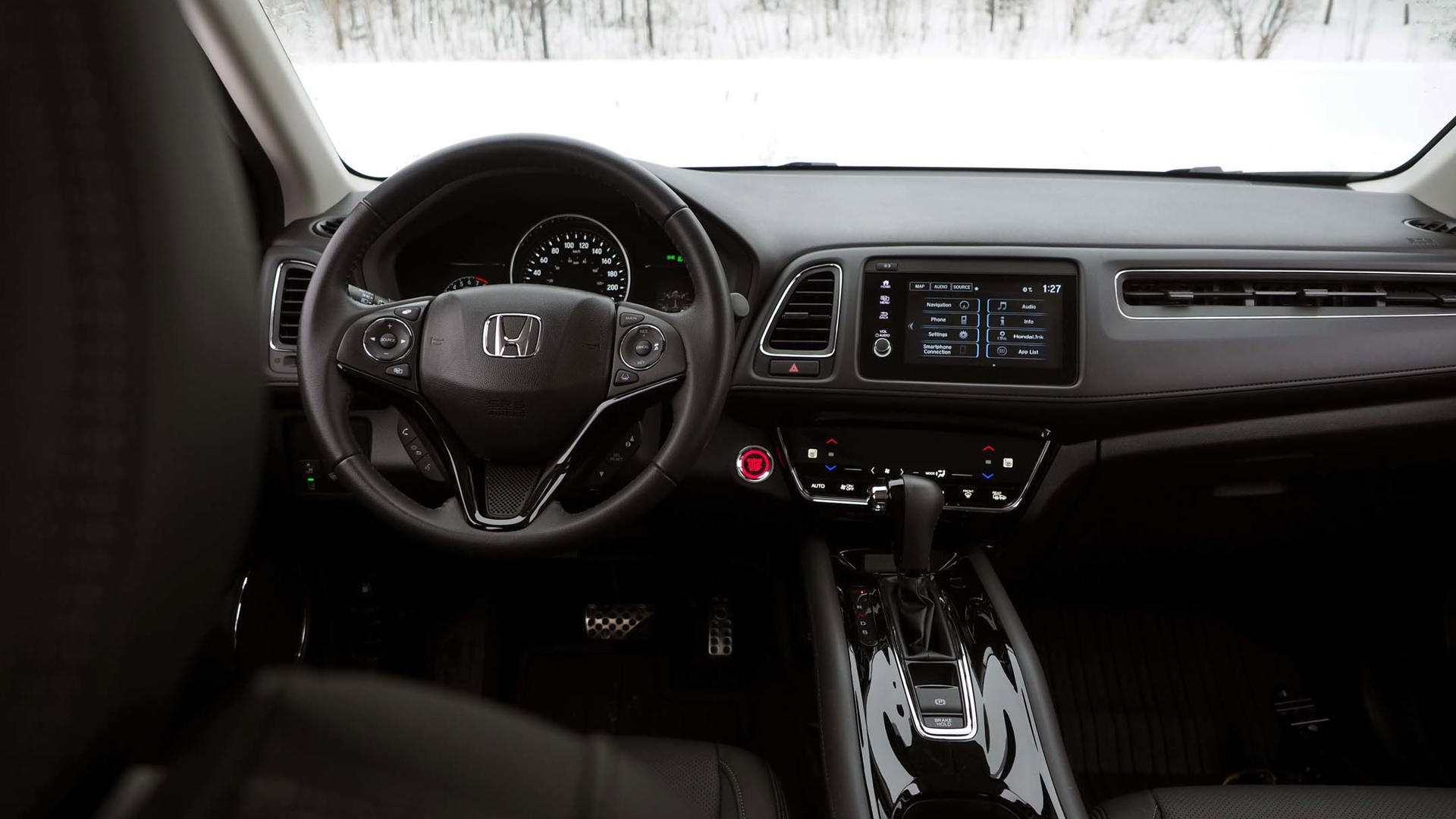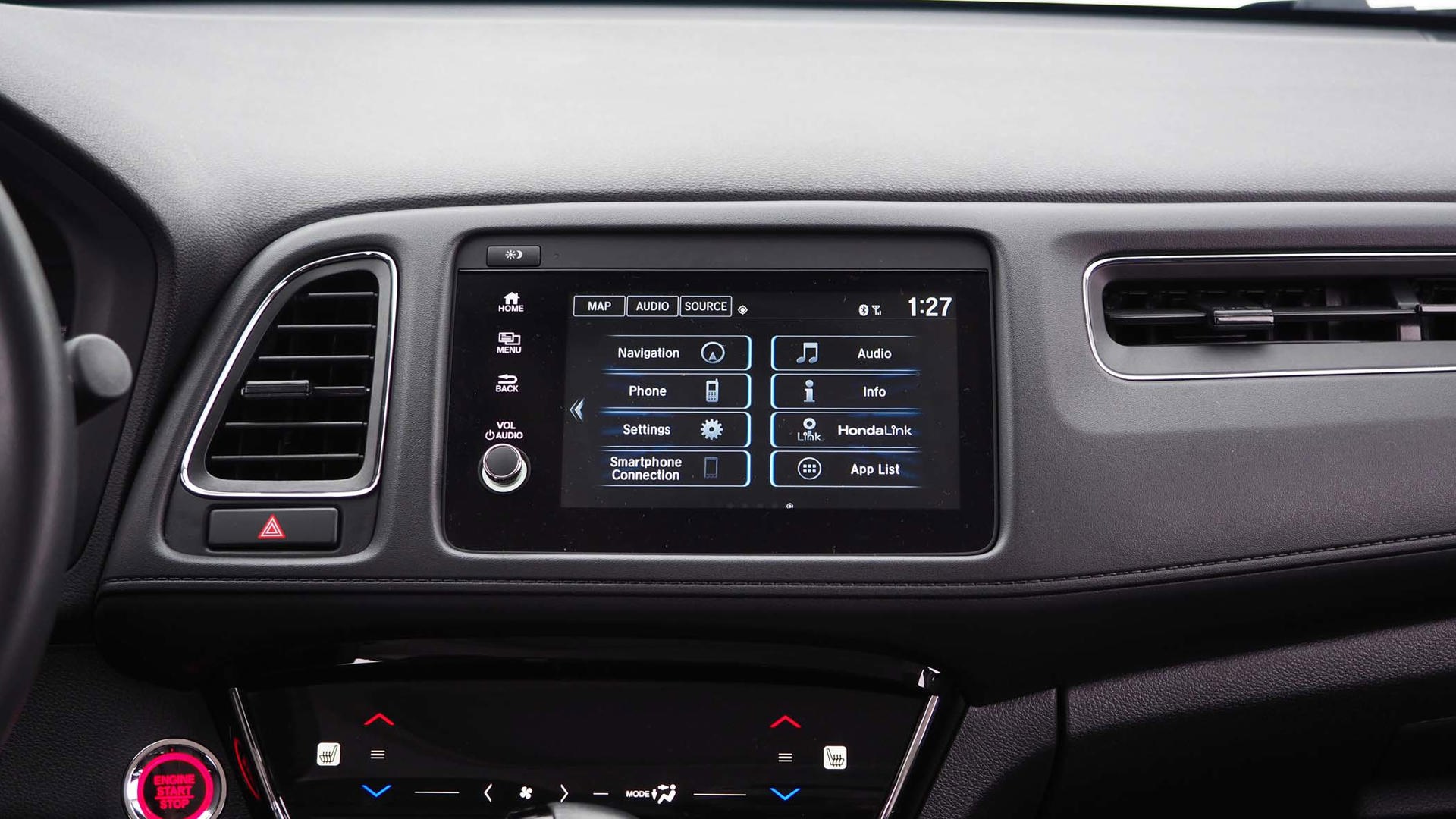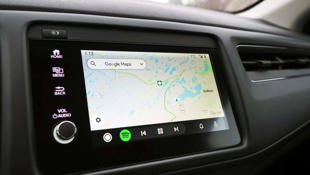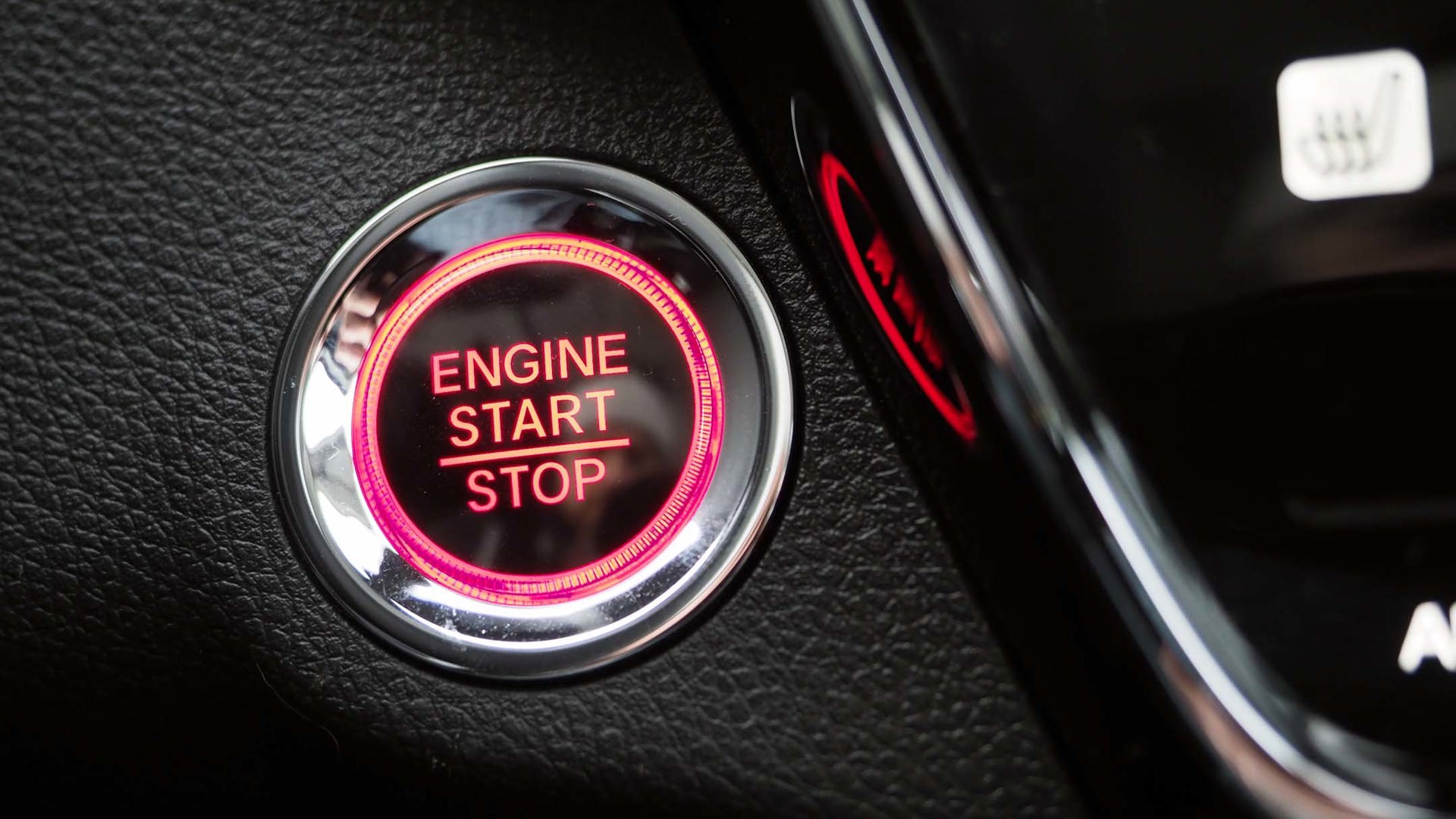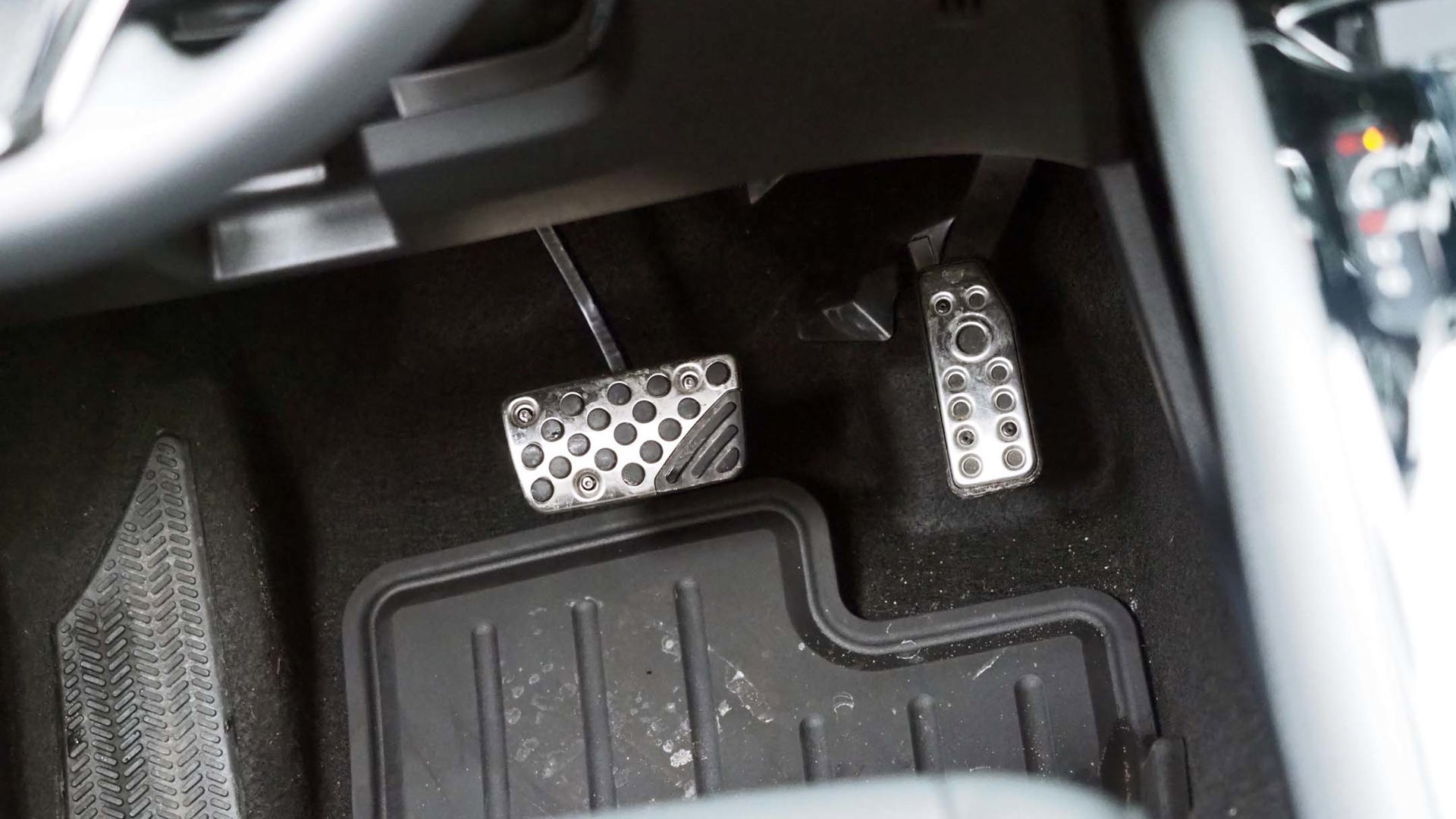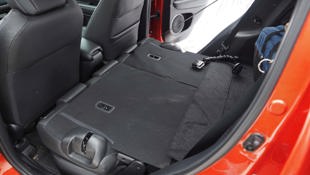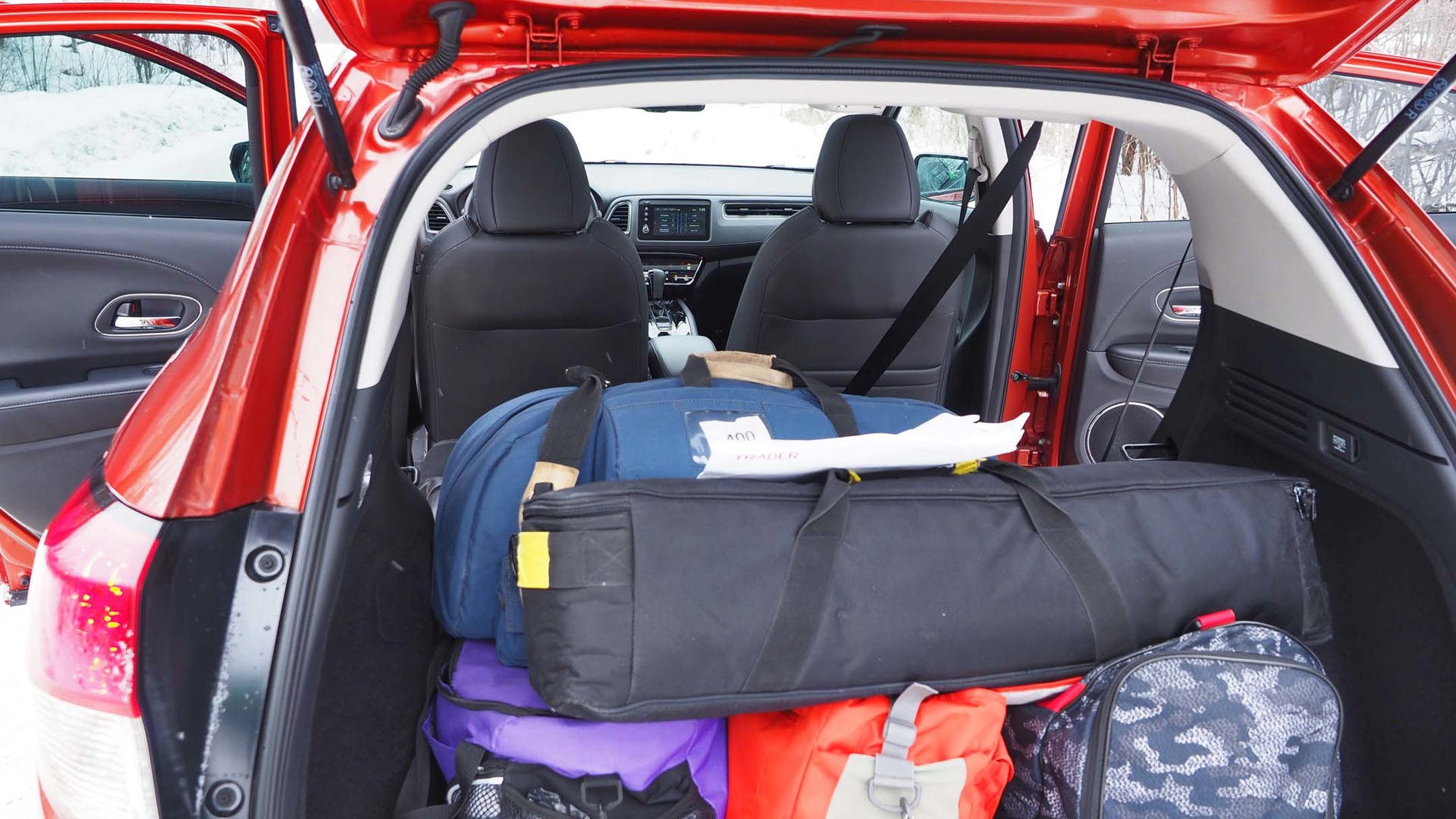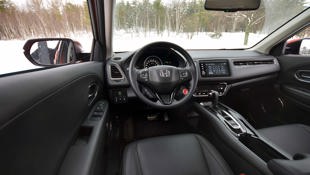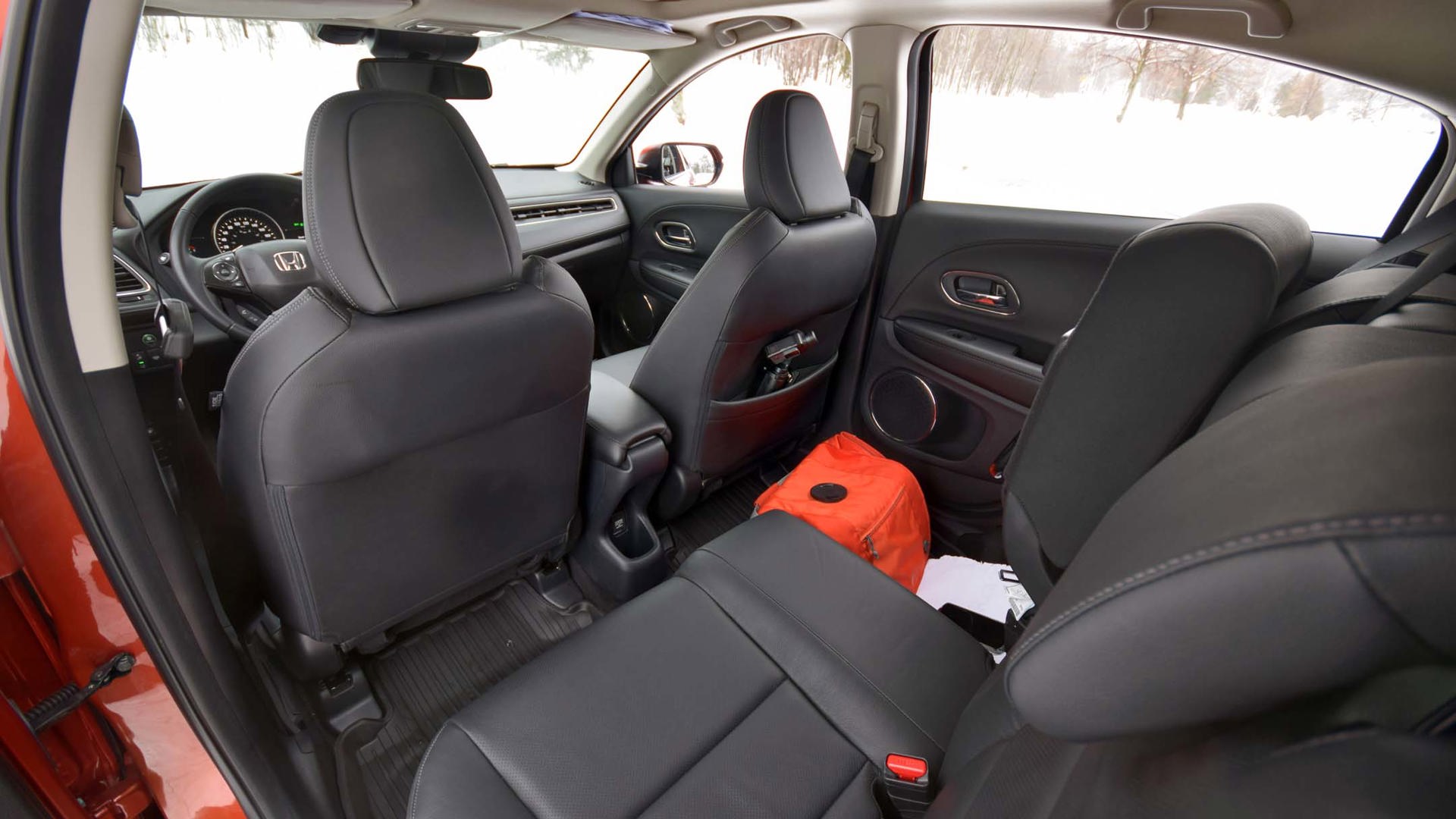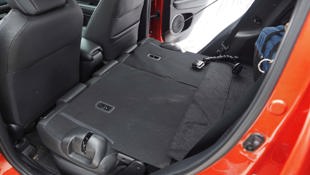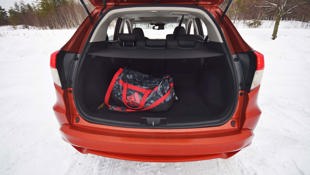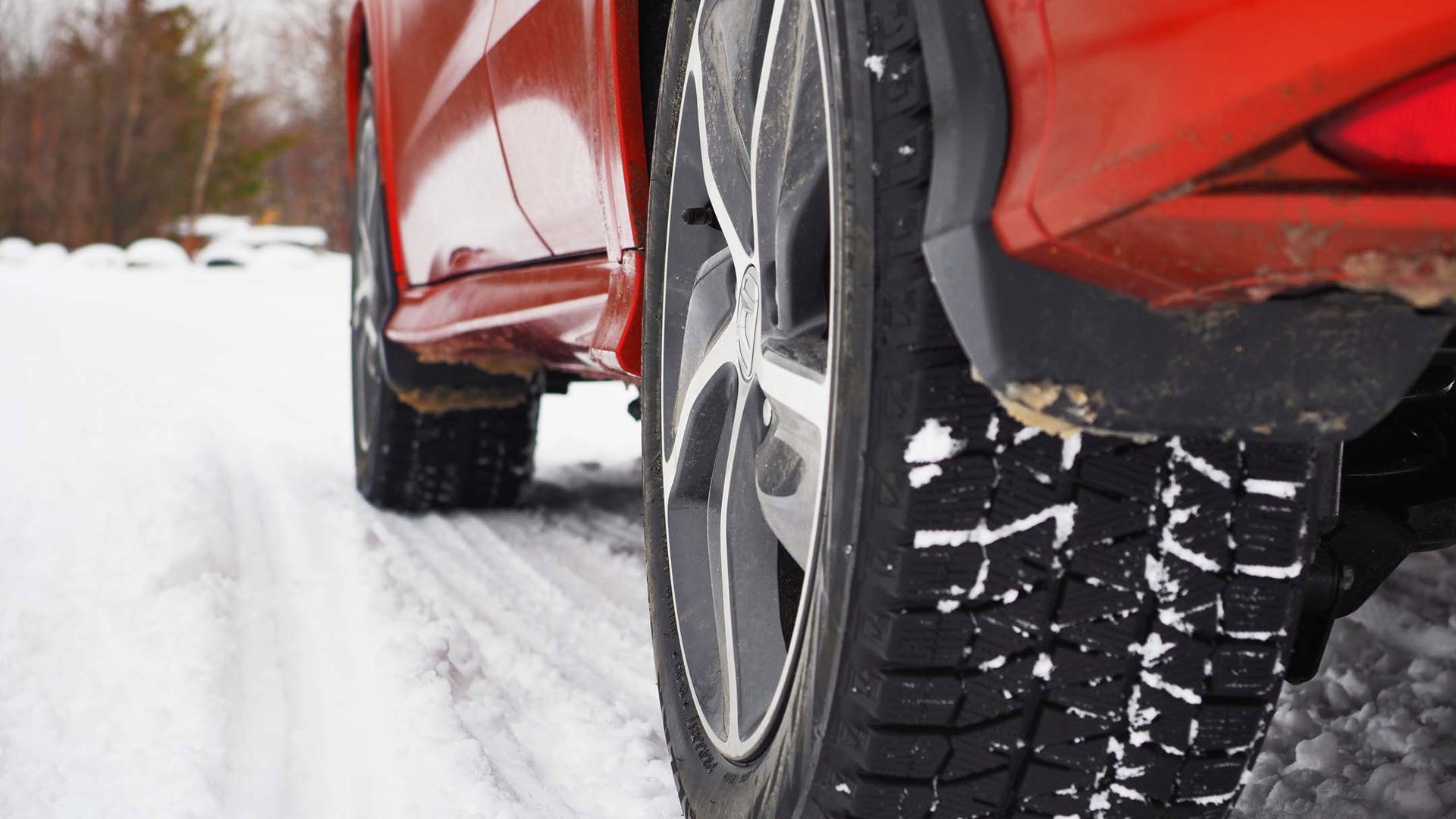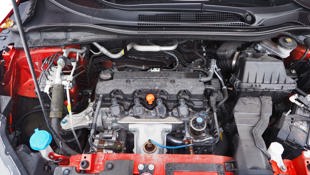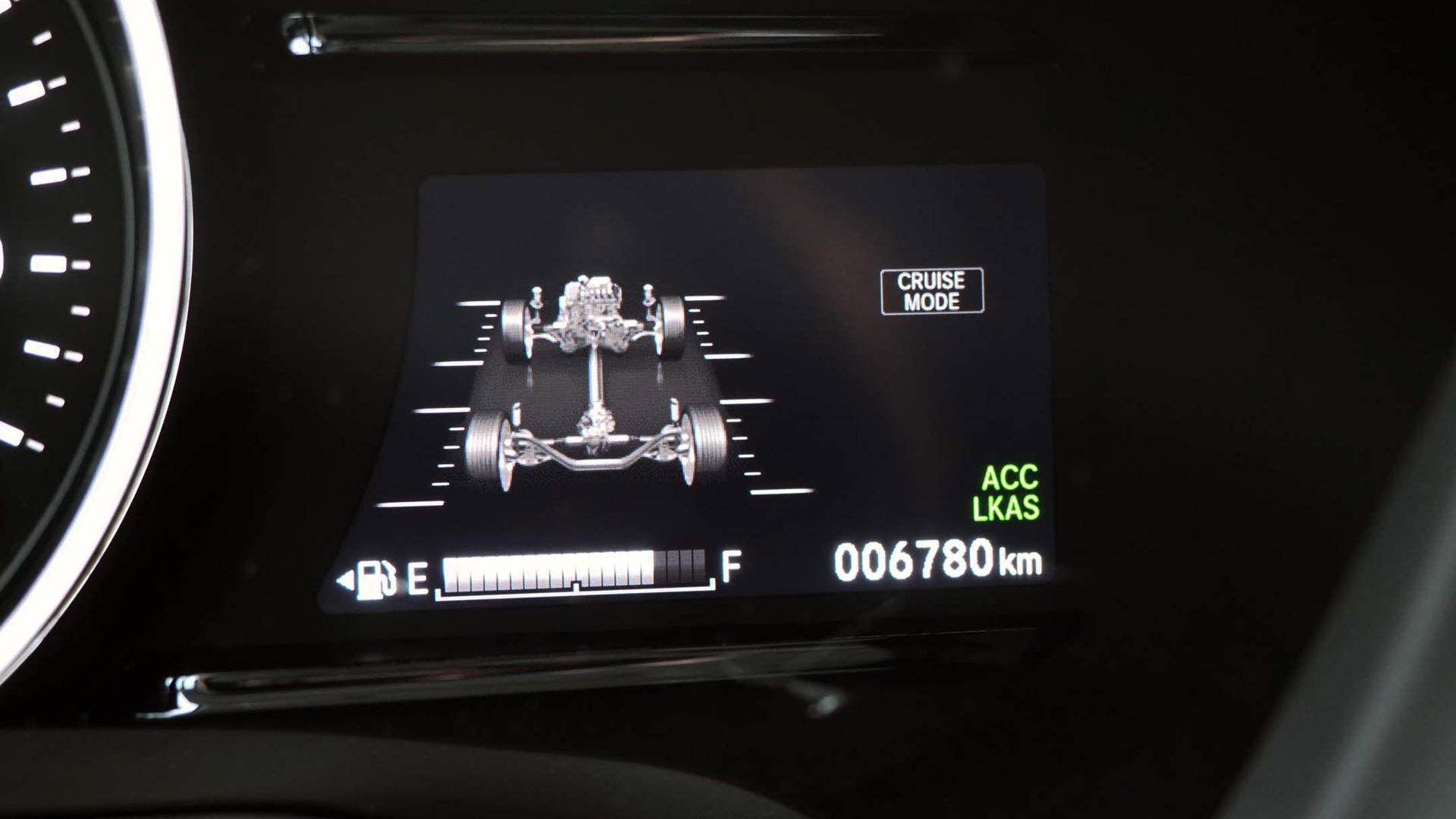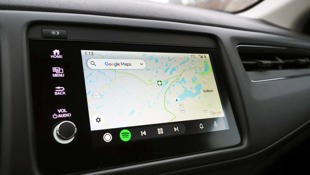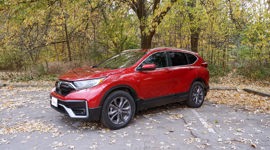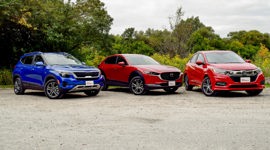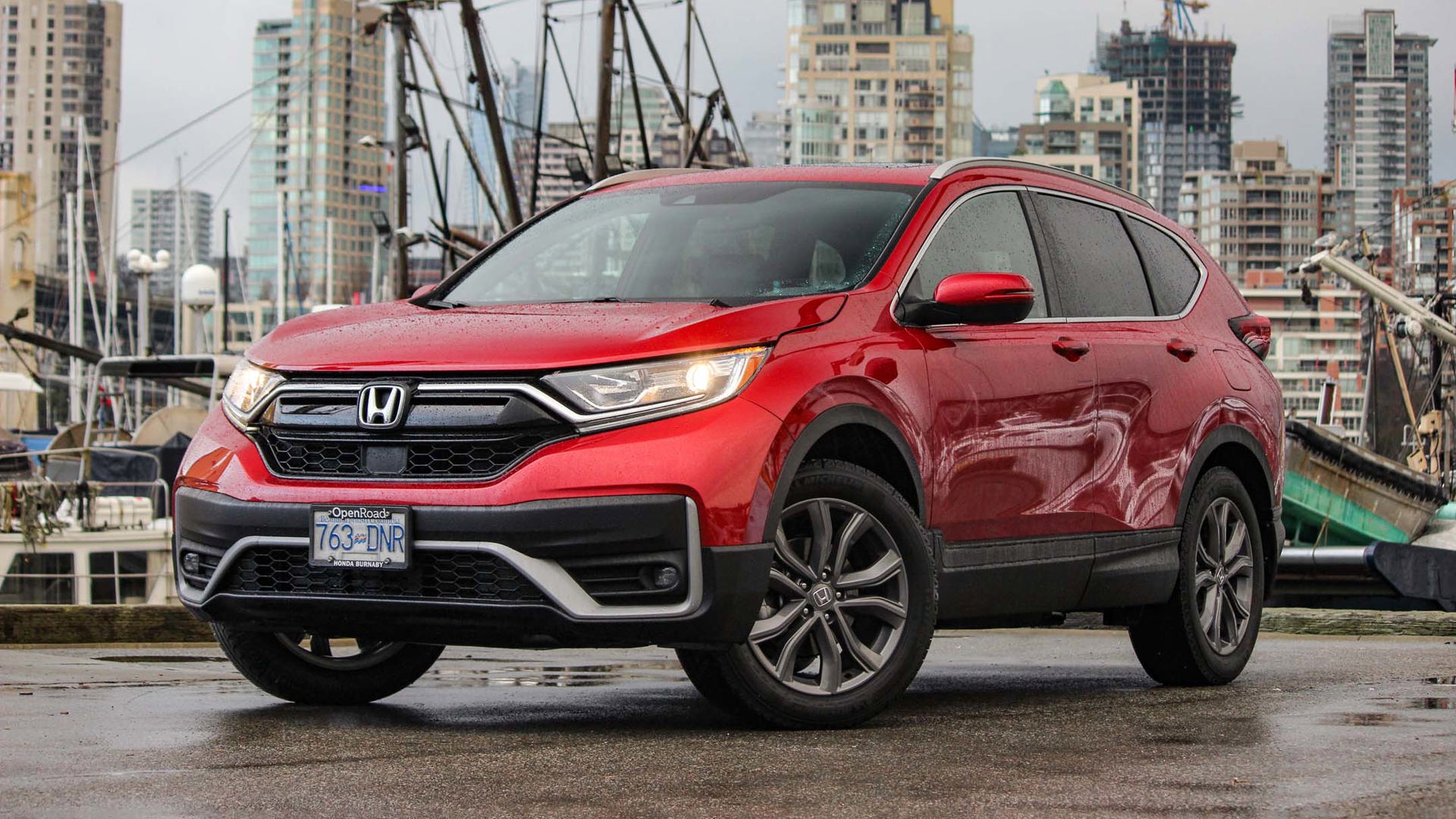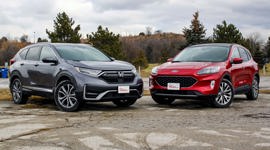 AutoTrader SCORE
AutoTrader SCORE
-
STYLING7/10
-
Safety9/10
-
PRACTICALITY9/10
-
USER-FRIENDLINESS9/10
-
FEATURES7/10
-
POWER7/10
-
COMFORT7/10
-
DRIVING FEEL9/10
-
FUEL ECONOMY9/10
-
VALUE7/10
The Honda HR-V isn’t the most cutting-edge offering in the small crossover segment – but equipped with quality winter tires and a capable AWD system, my tester handled a generous spell of Northern Ontario winter with confidence to spare and some surprisingly pleasing handling.
The HR-V’s secret sauce? It’s easy to drive, thrifty, and refreshingly confident and responsive regardless of the weather.
Styling: 7/10
The latest round of styling updates seem to have done the HR-V well. Distinctive fascias and a sharpened grille make this a distinctive looker, and immediately a Honda. My high-grade tester’s body kit dialled up the looks, and the low-profile roof rails and tucked rear door handles convey a sense of sportiness and adventure.
It’s a subtle touch, but the sloping rear window line suggests “hot hatch” more than small crossover, adding to the compact and athletic appearance.
On board, things are a bit more generic. Some HR-V–specific visuals (climate control vents, flowing centre console) help jazz up the interior from other Honda models but the majority of the controls, switches, interfaces, and displays are standard-issue and highly familiar.
On one hand, that’s less new stuff for a repeat Honda driver to learn. On the other hand, it may make your 2020 HR-V’s cabin seem like less of an upgrade from an older Honda model.
Safety: 9/10
Safety-minded shoppers rejoice: the HR-V ticks virtually all of the boxes.
A multi-angle back-up camera and right-side camera system appear on the central screen when activated, giving drivers a more straightforward look at what’s beside or behind them. Clever tech, but the graphics are so-so at best.
Radar cruise, collision alert with braking, road-departure mitigation, and lane-departure warning are also on board.
On my watch, I appreciated the relatively non-intrusive manner in which these systems worked. By using visual warnings for most (or a slight wiggle on the steering wheel to advise of a lane departure), the driving environment remains quieter and more relaxed. During my time with the tester, I noted no issues with system performance or sensitivity, and drivers can quickly turn these assist systems on and off to taste while learning them for the first time.
The LED headlights are also notable. Drivers get plenty of powerful light projected where it’s needed. The lighting colour is bright and vivid, helping reduce eye strain on long drives. Peripheral illumination is covered too – thanks to good lighting projected towards nearby treelines and culverts.
Practicality: 9/10
In most regards, small crossovers don’t get much more practical.
In back, HR-V’s cargo hold is low, wide, and sits close enough to the ground that there’s minimal bending or lifting required to load and unload cargo.
The rear seats are equipped with a few special tricks to further bolster flexibility. For instance, the seatbacks can fold down, creating a low and flat cargo hold, and opening up plenty more usable space when rear-seat occupants aren’t along for the ride.
Or, flip the seat bottoms up and turn the space into a handy cargo area for tall things like bikes or flat-screen TV’s. Set up thusly, HR-V’s rear seat area is an easy-to-access lounge for the family dog, with step-in height comparable to a car.
The HR-V is also easy on fuel, easy to manoeuvre and park, and should prove easy to live with on the daily.
There are a few gripes, though. Some drivers will wish for easier-to-access charging provisions, and your 5'10" writer was almost completely out of rear-seat headroom, though legroom is ample in back. Further, the rear door opening, which narrows at the bottom, may cause slight awkwardness for adults as they board and exit.
So, save the rear seats for the smallest passengers you’ve got – or leave them folded down when not in use to take full advantage of all the cargo room.
User Friendliness: 9/10
Once drivers have spent a day or two dialling HR-V’s various features into their preferred settings, there’s little to worry about when it comes to user friendliness.
With automatic climate control, lights, brights, and wipers, drivers have little to fiddle with in changing conditions, which makes it easier to stay focussed on the road ahead. The central command touchscreen graphics are quite dated as $30,000+ vehicles go, but the system is logical and easy to navigate.
Plug in your compatible smartphone, and Apple CarPlay or Android Auto provide on-screen control over selected handset functions like music, navigation, communications, and more. Just tap a button, and your phone’s built-in voice-assistant is at your service, right from the HR-V’s dashboard.
Features: 7/10
The HR-V Touring comes in a single configuration: loaded.
With a sunroof, heated leather, advanced safety features, a self-dimming rearview mirror, and an up-level stereo; the HR-V includes most of the must-have features in the segment. Beyond this, the features are all logically presented, easy to manipulate, and highly functional, right down to the on-screen tap-to-toggle controls for the back-up camera angle.
Shoppers set on such goodies as remote start, a panoramic sunroof, wireless charging, or ventilated seats will need to look elsewhere, however.
Power: 7/10
The HR-V’s powertrain does its best work in an around-town setting.
Here, the 1.8-litre engine feels snappy and eager, especially off the line. The continuously variable transmission (CVT) has no gears, so power is delivered on a smooth and seamless wave. Drivers can engage both an Econ drive mode and a Sport transmission mode, to taste.
Use Sport mode around town, and you’ve got snappy pickup that’s perfect for weaving your way through the daily grind. Paddle shifters add some novelty by way of simulated shifting, though the transmission feels most natural when left to its own devices.
On the highway, HR-V cruises at relatively low revs, the engine remaining inaudible from the driver’s seat. The shift-free transmission helps enhance smoothness here too as there’s no shift-shock caused by gearing up and down over hilly terrain.
Passing and merging power are adequate, but don’t be shy with the throttle: as it tends to go with Honda engines, this little fella needs plenty of revs to do its best work.
Those after solid fuel economy will probably find the setup just right: decent mileage, and a smooth and eager feel in around-town driving.
Comfort: 7/10
My tester demonstrated two potential gripes that test-drivers should be aware of.
First, ride quality is pegged towards the sporty side of the ride comfort spectrum. The HR-V feels direct, competent, and quick to respond. These attributes help further its very car-like driving feel. Some test drivers prefer this, others may wish for something that’s smoother and more refined, more of the time.
Second, the ride quality takes a bigger-than-average hit on really nasty roads. On the worst of these, the suspension can feel rougher and noisier than expected, turning in a feel that’s more “small car” than “small SUV”. Numerous competitors (including the Toyota C-HR, Subaru Crosstrek, and Hyundai Kona) do a better job of maintaining high ride quality, even on really lousy roads.
Read on, there is redemption.
Driving Feel: 9/10
The driving feel of the Honda HR-V in the snow (and equipped with quality winter tires) is its most valuable asset.
The AWD system requires none of your attention, ever. At low speeds in deep snow, and especially from stationary, the initial bite is strong. Off the line, all wheels are powered from virtually the first inch of movement, meaning four wheels are participating in propulsion from the get-go.
From the driver’s seat, it’s seamless: no digging, no spinning, no fuss. Just press the throttle and you’re off. Even accelerating over mixed low-traction surfaces, or challenged with starting from a stop on a steep and icy hill, you’re up and moving with very minimal drama. Point and shoot.
(Check out our video review for some slo-mo footage and further demonstration.)
For a smaller machine, HR-V has a heavy and dense cruising feel on slippery highways that will remind most shoppers of a larger crossover. Equipped with Bridgestone Blizzak tires, the HR-V felt locked on during multiple highway snowstorms and in a variety of winter conditions. The steering is heavyset at higher speeds, meaning slush ruts do little to pull it from your hands.
Those concerned that the HR-V might be too small to feel steady in the snow have little to worry about.
Further, under hard braking and even over challenging split-traction surfaces, similar confidence is imparted. Stopping power is good, the pedal action is fairly precise, and drivers can expect little less than straight, quick, and drama-free stops in virtually any setting. The electronic traction aids even seem keen to keep the HR-V pointed straight where you’re aiming, but with subtle and nearly imperceptible interventions when needed.
Translation?
The calibration of the hardware and software beneath this machine give you a surprisingly well-planted feel in any sort of winter driving.
Sportier drivers will not be disappointed, either.
The HR-V is a lively and energetic sled when driven with some intent on slippery backroads, with quick steering, precise brake feel, and the sporty-set suspension enabling some athletic moves if desired.
With the transmission in Sport and the gas-saving Econ mode off, drivers have plenty of bandwidth to use throttle-lifts, steering flicks, and light braking to stir up some tail-happy fun in the corners. With 141 horsepower, it’s not a power-slide monster – but the feel of the HR-V at the tips of your fingers and toes as it slips through sequential slippery corners will leave a lasting grin.
All said, the engineers have dialled in an enticing combination of winter driving confidence and fun factor. It’s all up to your right foot, and the settings you use.
Fuel Economy: 9/10
Most will find the HR-V’s fuel economy to be highly reasonable, especially shoppers who prefer fuel efficiency over all-out firepower. With a combined rating of 8.5 L/100 km (I averaged a little over 9, your results will vary) and a decent fuel tank, most will find the long-distance range to be adequate, too.
Value: 7/10
For the shopper after fantastic winter driving manners, surprising space and flexibility, and strong fuel economy figures, the HR-V is worth a closer look – especially by repeat Honda shoppers planning to stay within the brand.
Note that some competitors boast superior ride quality, power output, and feature content offerings – even at lower price points.
The Verdict
Loyal Honda shoppers after a familiar package will feel right at home with HR-V’s clever design touches and easygoing tech, though shoppers after certain high-end features and an excellent rough-road ride may have better options.
| Engine Displacement | 1.8L |
|---|---|
| Engine Cylinders | I4 |
| Peak Horsepower | 141 hp @ 6,500 rpm |
| Peak Torque | 127 lb-ft @ 4,300 rpm |
| Fuel Economy | 9.1/7.7/8.5 L/100 km cty/hwy/cmb |
| Cargo Space | 657 / 1,583 L seats down |
| Model Tested | 2020 Honda HR-V Touring |
| Base Price | $32,790 |
| A/C Tax | $100 |
| Destination Fee | $1,815 |
| Price as Tested | $34,705 |
|
Optional Equipment
None
|
|
